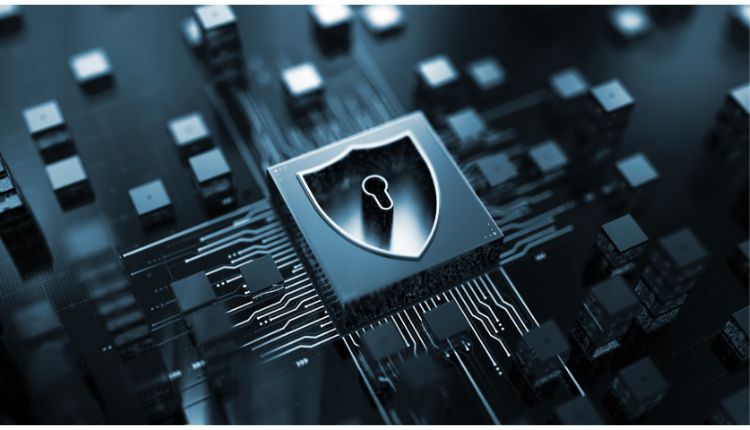Hackers are getting smarter, but so is cybersecurity. With cyber threats evolving, organizations need to embrace the latest solutions to safeguard sensitive information, critical infrastructure, and digital assets. New technologies are defining the future of cybersecurity, enhancing defenses, and guaranteeing compliance with regulations such as NERC CIP (North American Electric Reliability Corporation Critical Infrastructure Protection). The technologies assist companies in identifying, preventing, and responding to cyber threats more quickly and efficiently.
canva
Artificial Intelligence (AI) and Machine Learning (ML)
AI and ML revolutionized cybersecurity by automating responses to threats and the detection of the same. They scan millions of data units in real-time to check for anomalies as well as pattern formation indicative of possible attacks.
Cybercriminals continually evolve their methods, rendering conventional security solutions ineffective. AI-based cybersecurity solutions evolve with them by learning from emerging threats. Predictive analytics enable security teams to predict cyberattacks even before they occur. Organizations can react immediately to threats with AI-based automation, minimizing the chances of data breaches and downtime. AI-based security solutions also enhance endpoint defense, identify phishing attacks, and examine behavioral patterns to block fraud, respectively.
The nerc cip standards ensure the cybersecurity of critical power infrastructure, and AI and machine learning enhance compliance by automating threat detection, anomaly analysis, and incident response. AI-driven security solutions help utilities identify vulnerabilities in real time, reducing human error and response time.
Blockchain for Secure Transactions
Blockchain technology provides a decentralized security solution that is hard to hack by anyone. Each transaction is recorded in an immutable ledger, keeping things transparent and preventing fraud.
Financial institutions, health organizations, and logistics networks utilize blockchain to secure sensitive information. By removing central points of failure, the risk of cyberattacks is lessened with blockchain. Blockchain also improves identity management, guaranteeing only those who are permitted access sensitive systems. Blockchain-based authentication models like decentralized identity validation and multi-signature authentication ensure further security.
Blockchain is also integral to the security of the Internet of Things (IoT). With more devices becoming connected, blockchain’s distributed ledger technology secures device-to-device communication. Data integrity is ensured, unauthorized changes are deterred, and device spoofing and hijacking are minimized.
Zero Trust Architecture (ZTA)
Zero Trust refers to a set of principles, one of which states: “Never trust; always verify.” The traditional security paradigm assumes that users in the network will be trusted. However, this trust exposes organizations to internal threats and credential-based attacks.
The ZTA enforces identity verification and strict access controls for accessing resources. The architecture follows the principles of multi-factor authentication (MFA), least-privilege access, and continuous monitoring. By applying this model, organizations can reduce their attack surface and thus protect their key resources from unauthorized access.
Companies are also implementing micro-segmentation as a zero-trust measure. Fragmenting networks contain the effect of a breach. Micro-segmentation controls threats and inhibits lateral network movement, thus curbing cyberattack proliferation.
Quantum Cryptography and Post-Quantum Security
Traditional encryption is facing an onslaught from quantum computing, making current security null and void. Cybersecurity scientists are engaged in the development of quantum-resistant cryptographic algorithms that will protect confidential data.
Quantum cryptography takes advantage of the properties of quantum mechanics to create extremely secure encryption keys. Such keys cannot be replicated, giving machine-to-machine secure communication. Governments and enterprises are preparing for the post-quantum era through investment in quantum-safe security solutions.
Organizations must start transitioning to quantum-resistant encryption algorithms, such as lattice-based cryptography and hash-based signatures. Cybersecurity experts are also researching quantum key distribution (QKD), which provides theoretically unbreakable encryption by leveraging the laws of quantum entanglement.
Extended Detection and Response (XDR)
XDR complements legacy security controls by giving a single view of threats throughout an organization’s entire network. In contrast to standalone security products, XDR combines endpoint, network, and cloud security, enhancing visibility and response time.
This method enables security teams to correlate data from various sources, detecting advanced threats that would otherwise remain hidden. With automated threat hunting and response, XDR minimizes the workload of security professionals and improves overall protection.
XDR platforms take advantage of strong analytics and machine learning to detect unusual behavior that doesn’t correspond to known attack patterns. These platforms also enhance forensic investigation strengths so that cyber units can assess chains of attack and fortify subsequent defenses.
Cloud Security Advances
As organizations migrate their applications to a cloud infrastructure, it is ever more important to provide protection to this cloud-based infrastructure. Various attacks on cloud apps are launched by cybercrooks who prey on misconfiguration and poor authentication.
Secure Access Service Edge (SASE) combines networking and security into a single cloud-delivered solution. With zero-trust access, encrypted connections, and real-time threat detection, SASE improves cloud security. Also, AI-based cloud security solutions help identify suspicious behavior, cutting off any unauthorized access to sensitive information.
Cloud-native security solutions include the Cloud Security Posture Management (CSPM) offerings that allow companies to monitor and enforce security policies in multi-cloud environments. The Cloud Workload Protection Platform (CWPP) protects civil machines, containers, and serverless workloads from cyber attacks.
canva
Internet of Things (IoT) Security Improvements
The explosive proliferation of IoT devices adds new levels of cybersecurity threats. Most IoT devices are not highly secured, and therefore simple targets for cyber-attacks. Once compromised, these devices become a vulnerable point for cyber-attacks.
Companies need to implement strong security measures to protect IoT ecosystems. Best practices include device authentication, network segmentation, and real-time monitoring. AI-powered security tools scan IoT traffic patterns and detect and neutralize potential threats before they cause damage.
Along with this, security experts are calling for IoT security regulatory standards. Stronger firmware updates, encrypted communications, and endpoint detection will decrease vulnerabilities among connected devices.
Biometric Verification and Behavioral Analysis
Passwords alone are no longer adequate to secure sensitive data. Cyber attackers launch phishing attacks and credential stuffing to infiltrate unauthorized access. Biometric verification adds deeper security by leveraging distinctive physical features like fingerprints and facial recognition.
Behavioral analytics also adds to security by examining user behavior. If the action of a user differs from his normal pattern, the system marks the activity as suspicious. This proactive measure prevents unauthorized access and account takeovers.
Organizations are combining biometric authentication with AI-driven identity and access management (IAM) systems. These systems examine facial recognition, keystroke dynamics, and voice authentication to add security.
The Role of Regulatory Compliance and Cybersecurity Frameworks
Cybersecurity laws ensure organizations adopt the best practices in safeguarding essential infrastructure. Compliance with NERC CIP contributes significantly to protecting the energy sector by imposing tight cybersecurity regulations.
Laws such as GDPR, CCPA, and NIST offer standards in protecting sensitive information. Companies emphasizing compliance minimize the chances of regulatory fines and breaches. By embracing new cybersecurity technology, organizations get a head start on emerging threats and regulatory obligations.
FAQs
How can AI-driven cybersecurity solutions proactively prevent cyberattacks?
AI detects anomalies in real time, identifying threats before they escalate. It automates responses, reducing human error and reaction time.
Why is Zero Trust Architecture essential for modern cybersecurity strategies?
Zero Trust eliminates implicit trust, requiring continuous identity verification. This prevents unauthorized access and minimizes insider threats.
How does NERC CIP compliance strengthen cybersecurity in the energy sector?
NERC CIP enforces strict security controls to protect critical infrastructure. It mandates risk assessments, access controls, and continuous monitoring.






